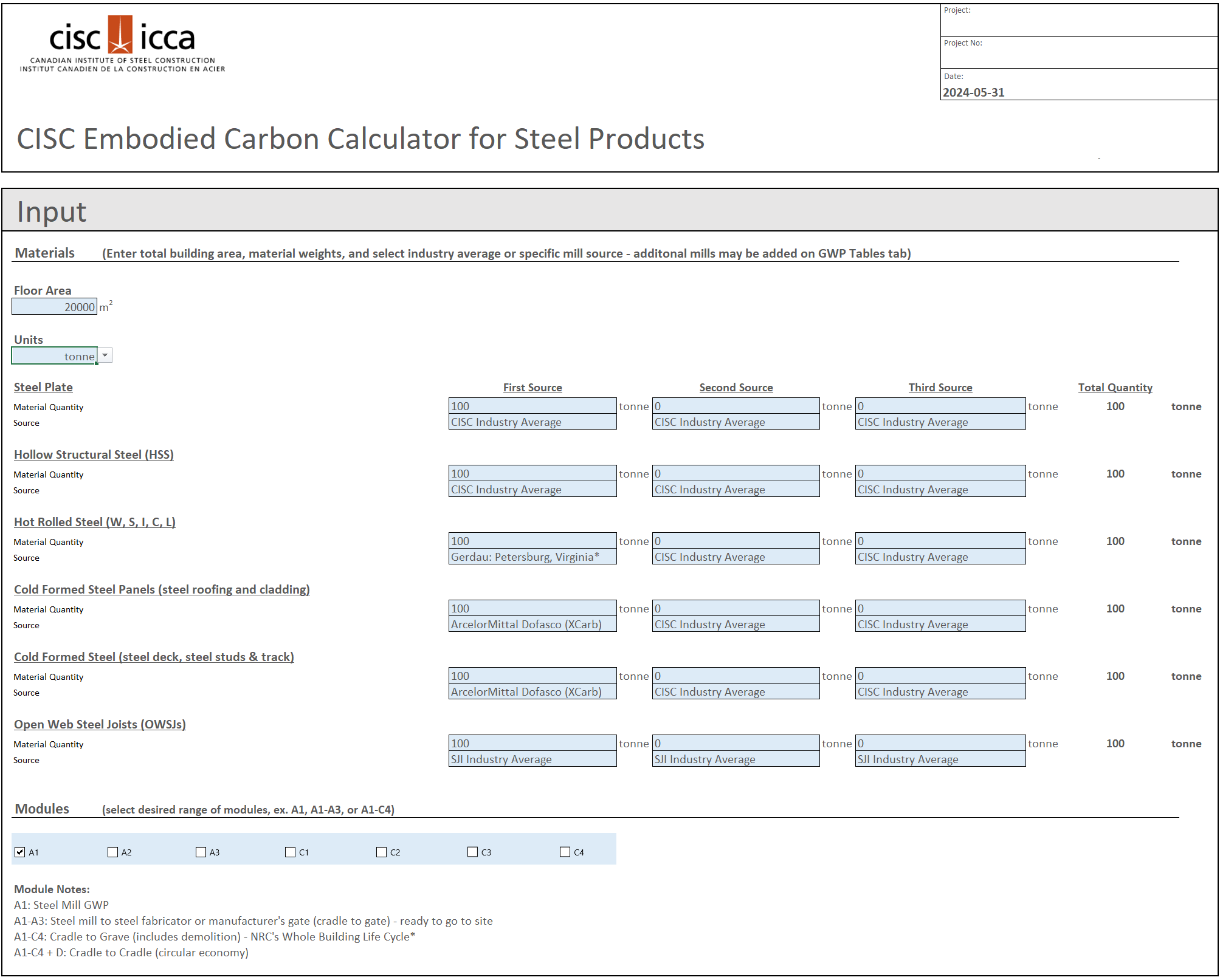Embodied Carbon
Embodied carbon is the measure of all non-operational carbon emitted by a material during its lifecycle. Emissions include the production phase; raw material extraction and manufacturing, the construction phase; transportation and installation on site, the use phase; the repair and maintenance, the end of life phase; emissions related to the demolition and waste disposal of the material. Sources of emissions over the lifecycle of a material vary depending on the material. Recycling removes the need to extract virgin building materials and reduces embodied carbon as such. For steel, recycling provides a significant reduction in embodied carbon emissions. The majority of north American steel mills employ electric arc furnaces to produce steel with high recycled contents, making their products some of the lowest emitters in the world.

Whole Building Life Cycle Analysis
Whole building life cycle analysis is the primary approach to analyzing embodied carbon employed in Canada. wbLCA accounts for the embodied carbon of all materials used in construction over the full lifecycle of the structure. Current and upcoming procurement regulation related to embodied carbon will be include a wbLCA. The NRC had published national guidelines on the application of wbLCA and can be found here:

The CISC is committed to supporting owners, architects, engineers and fabricators in meeting and exceeding embodied carbon reduction targets. Canadian steel is an industry leader in the production of low embodied carbon steel. As well as guidance on carbon efficient design with steel.
The CISC has developed an embodied calculator for steel products to assist in your calculation of embodied carbon for your project. As you will see, you can vastly improve on the projects embodied carbon, from the industry average values, depending on where the steel is sourced. We have provided a few examples (in the sourcing pull down tabs).





